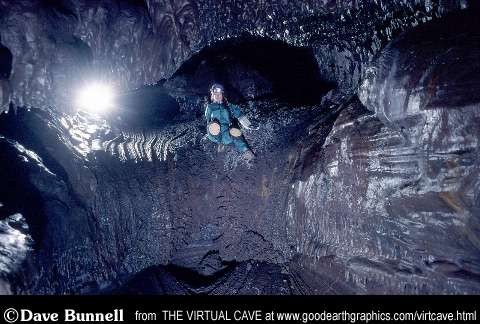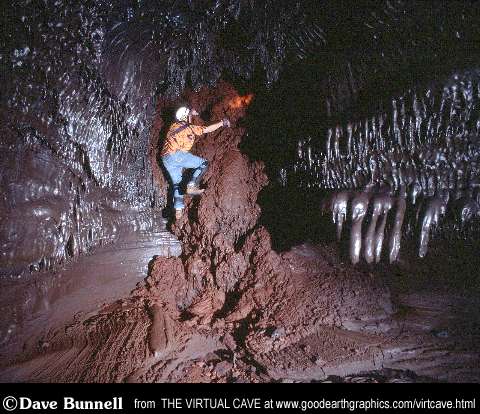|
Like flowing water, a lava stream
flowing underground can form a falls if the terrain on which the tube
forms is suddenly steeper. Such falls can range from a few feet to over
60' high, requiring rope to negotiate. Usually the falls form in the
lowest levels of lava tubes, rather than forming where a flow meets
a window and drops through to a lower level.
Many of the erosive features associated with waterfalls
also occur with lavafalls, with the hot lava thermally eroding into
bedrock and backcutting. As the lavafall retreats upstream, it leaves
a high-ceiling chamber downstream of it. Larger falls often have
lava lakes formed at the base, where turbulence
creates a deeper basin or plunge pool. Plunge
pools can be quite deep, especially if the falls was not back-cutting.
Studies indicate that their depth can be as much as twice the pool width.
Turbulence also results in passage widening at
the base of the falls, typically with breakdown of the undercut walls
above the growing plunge pool.
|




